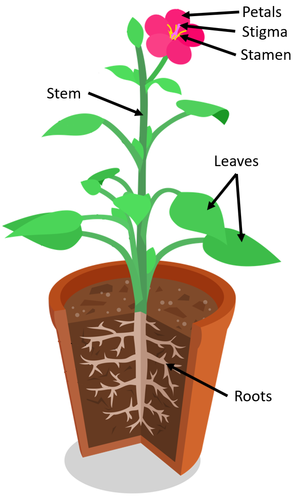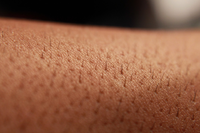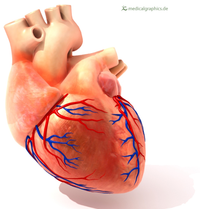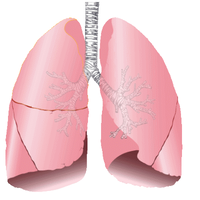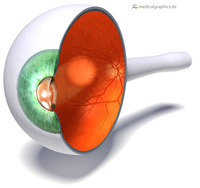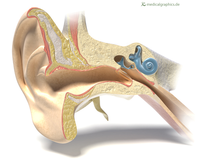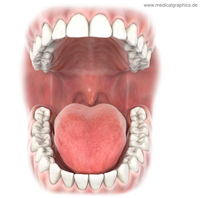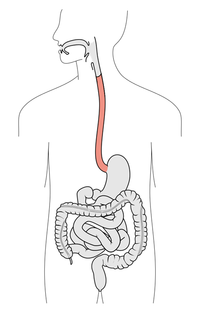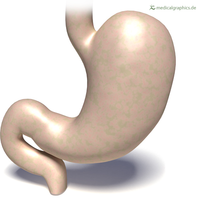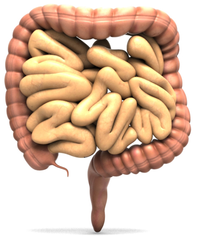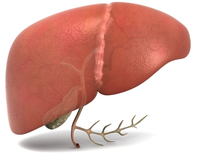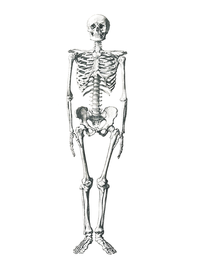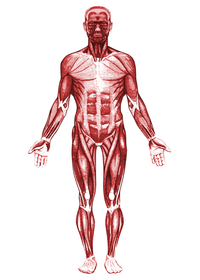Difference between revisions of "Organ"
(→Organs in Mammals) |
|||
| (10 intermediate revisions by 2 users not shown) | |||
| Line 12: | Line 12: | ||
|+ The organs may look different in different flowering plants. | |+ The organs may look different in different flowering plants. | ||
|- | |- | ||
| − | |[[File: | + | |[[File:FloweringPlantOrgans.png|center|300px]] |
| + | | style="height:20px; width:300px; text-align:left;" | | ||
| + | *The [[petal]]s are colourful [[organ]]s that attract insects to the flower. | ||
| + | *The [[stigma]] is a female reproductive [[organ]] in a flower. | ||
| + | *The [[stamen]] is a male reproductive [[organ]] in the flower that makes pollen. | ||
| + | *The [[leaf]] is an [[organ]] used for [[photosynthesis]]. | ||
| + | *The [[stem]] is an [[organ]] which supports the [[plant]]. | ||
| + | *The [[root]]s are an [[organ]] that [[Absorb (Biology)|absorbs]] [[mineral]]s and water from the soil. | ||
| + | |} | ||
| + | |||
| + | ===Organs in Mammals=== | ||
| + | |||
| + | {| class="wikitable" | ||
| + | |+ These are all human organs which may look different in different mammals. | ||
| + | |- | ||
| + | |[[File:Skin.png|center|200px]] | ||
| + | |[[File:HeartPicture.png|center|200px]] | ||
| + | |[[File:Lungs.png|center|200px]] | ||
| + | |[[File:EyeCrossSection.png|center|200px]] | ||
| + | |- | ||
| + | | style="height:20px; width:200px; text-align:center;" |The [[skin]] is an [[organ]] that protects the body from [[infection]]. | ||
| + | | style="height:20px; width:200px; text-align:center;" |The [[heart]] is an [[organ]] that pumps blood around the body. | ||
| + | | style="height:20px; width:200px; text-align:center;" |The [[lungs]] are a pair of [[organ]]s used for gas exchange. | ||
| + | | style="height:20px; width:200px; text-align:center;" |The [[eyes|eye]] is a [[Sensory Organ|sensory]] [[organ]] used to see. | ||
| + | |- | ||
| + | |[[File:Ear.png|center|200px]] | ||
| + | |[[File:Mouth.png|center|200px]] | ||
| + | |[[File:Oesophagus.png|center|200px]] | ||
| + | |[[File:Stomach.png|center|200px]] | ||
| + | |- | ||
| + | | style="height:20px; width:200px; text-align:center;" |The [[ears|ear]] is a [[Sensory Organ|sensory]] [[organ]] used to hear. | ||
| + | | style="height:20px; width:200px; text-align:center;" |The [[mouth]] is an [[organ]] is used to start [[digestion]] of food. | ||
| + | | style="height:20px; width:200px; text-align:center;" |The [[oesophagus]] is an [[organ]] that connects the [[mouth]] to the [[stomach]]. | ||
| + | | style="height:20px; width:200px; text-align:center;" |The [[stomach]] is an [[organ]] that [[digestion|digests]] food. | ||
| + | |- | ||
| + | |[[File:Intestines.png|center|200px]] | ||
| + | |[[File:Liver.png|center|200px]] | ||
| + | |[[File:HumanSkeleton.png|center|200px]] | ||
| + | |[[File:HumanMuscles.png|center|200px]] | ||
| + | |- | ||
| + | | style="height:20px; width:200px; text-align:left;" | | ||
| + | *The [[Small Intestine|small intestine]] [[Absorb (Biology)|absorbs]] nutrients | ||
| + | *The [[Large Intestine|large intestine]] [[Absorb (Biology)|absorbs]] water | ||
| + | *The [[rectum]] stores [[faeces]] | ||
| + | *The [[anus]] holds the [[faeces]] in. | ||
| + | | style="height:20px; width:200px; text-align:center;" |The [[liver]] is an [[organ]] used to remove [[toxic|toxin]]s from the [[blood]]. | ||
| + | | style="height:20px; width:200px; text-align:center;" |[[Bone]]s are [[organ]]s in the body used for support and protection. | ||
| + | | style="height:20px; width:200px; text-align:center;" |[[Muscle]]s are [[organ]]s that allow the body to move. | ||
| + | |} | ||
| + | |||
| + | ==Key Stage 4== | ||
| + | ===Meaning=== | ||
| + | An [[organ]] is a part of an [[organism]], made of several [[tissue]]s, that does a specific job. | ||
| + | |||
| + | ===About Organs=== | ||
| + | : [[Organ]]s are made of more than one different [[tissue]]s that work together. | ||
| + | : Only [[multicellular]] [[organism]]s can have [[organ]]s because [[tissue]]s are many of many [[Cell (Biology)|cells]]. | ||
| + | : An [[organ]] may have more than one job. | ||
| + | : Many [[organ]]s working together for the same purpose form an [[Organ System|organ system]]. | ||
| + | |||
| + | ===Organs in Flowering Plants=== | ||
| + | {| class="wikitable" | ||
| + | |+ The organs may look different in different flowering plants. | ||
|- | |- | ||
| − | | style="height:20px; width: | + | |[[File:FloweringPlantOrgans.png|center|300px]] |
| − | *The [[flower]] is a reproductive [[organ]]. | + | | style="height:20px; width:300px; text-align:left;" | |
| + | *The [[petal]]s are colourful [[organ]]s that attract insects to the flower. | ||
| + | *The [[stigma]] is a female reproductive [[organ]] in a flower. | ||
| + | *The [[stamen]] is a male reproductive [[organ]] in the flower that makes pollen. | ||
*The [[leaf]] is an [[organ]] used for [[photosynthesis]]. | *The [[leaf]] is an [[organ]] used for [[photosynthesis]]. | ||
*The [[stem]] is an [[organ]] which supports the [[plant]]. | *The [[stem]] is an [[organ]] which supports the [[plant]]. | ||
| Line 34: | Line 99: | ||
| style="height:20px; width:200px; text-align:center;" |The [[heart]] is an [[organ]] that pumps blood around the body. | | style="height:20px; width:200px; text-align:center;" |The [[heart]] is an [[organ]] that pumps blood around the body. | ||
| style="height:20px; width:200px; text-align:center;" |The [[lungs]] are a pair of [[organ]]s used for gas exchange. | | style="height:20px; width:200px; text-align:center;" |The [[lungs]] are a pair of [[organ]]s used for gas exchange. | ||
| − | | style="height:20px; width:200px; text-align:center;" |The [[eyes|eye]] is a [[ | + | | style="height:20px; width:200px; text-align:center;" |The [[eyes|eye]] is a [[Sensory Organ|sensory]] [[organ]] used to see. |
|- | |- | ||
|[[File:Ear.png|center|200px]] | |[[File:Ear.png|center|200px]] | ||
| Line 41: | Line 106: | ||
|[[File:Stomach.png|center|200px]] | |[[File:Stomach.png|center|200px]] | ||
|- | |- | ||
| − | | style="height:20px; width:200px; text-align:center;" |The [[ear]] is a [[ | + | | style="height:20px; width:200px; text-align:center;" |The [[ears|ear]] is a [[Sensory Organ|sensory]] [[organ]] used to hear. |
| style="height:20px; width:200px; text-align:center;" |The [[mouth]] is an [[organ]] is used to start [[digestion]] of food. | | style="height:20px; width:200px; text-align:center;" |The [[mouth]] is an [[organ]] is used to start [[digestion]] of food. | ||
| style="height:20px; width:200px; text-align:center;" |The [[oesophagus]] is an [[organ]] that connects the [[mouth]] to the [[stomach]]. | | style="height:20px; width:200px; text-align:center;" |The [[oesophagus]] is an [[organ]] that connects the [[mouth]] to the [[stomach]]. | ||
| Line 56: | Line 121: | ||
*The [[rectum]] stores [[faeces]] | *The [[rectum]] stores [[faeces]] | ||
*The [[anus]] holds the [[faeces]] in. | *The [[anus]] holds the [[faeces]] in. | ||
| − | | style="height:20px; width:200px; text-align:center;" |The [[liver]] is an [[organ]] used to remove [[toxin]]s from the [[blood]]. | + | | style="height:20px; width:200px; text-align:center;" |The [[liver]] is an [[organ]] used to remove [[toxic|toxin]]s from the [[blood]]. |
| style="height:20px; width:200px; text-align:center;" |[[Bone]]s are [[organ]]s in the body used for support and protection. | | style="height:20px; width:200px; text-align:center;" |[[Bone]]s are [[organ]]s in the body used for support and protection. | ||
| style="height:20px; width:200px; text-align:center;" |[[Muscle]]s are [[organ]]s that allow the body to move. | | style="height:20px; width:200px; text-align:center;" |[[Muscle]]s are [[organ]]s that allow the body to move. | ||
|} | |} | ||
| + | |||
| + | ===References=== | ||
| + | ====AQA==== | ||
| + | |||
| + | :[https://www.amazon.co.uk/gp/product/0008158754/ref=as_li_tl?ie=UTF8&camp=1634&creative=6738&creativeASIN=0008158754&linkCode=as2&tag=nrjc-21&linkId=27ad53b0283feeff7fc5ae04a9e205f388 ''Organ, pages 12, 27, 170, GCSE Biology; Student Book, Collins, AQA ''] | ||
| + | :[https://www.amazon.co.uk/gp/product/0008158754/ref=as_li_tl?ie=UTF8&camp=1634&creative=6738&creativeASIN=0008158754&linkCode=as2&tag=nrjc-21&linkId=27ad53b0283feeff7fc5ae04a9e205f389 ''Organ; donation, page 204-7, GCSE Biology; Student Book, Collins, AQA ''] | ||
| + | :[https://www.amazon.co.uk/gp/product/0008158754/ref=as_li_tl?ie=UTF8&camp=1634&creative=6738&creativeASIN=0008158754&linkCode=as2&tag=nrjc-21&linkId=27ad53b0283feeff7fc5ae04a9e205f390 ''Organ; system, pages 12, 27, 86, 170, GCSE Biology; Student Book, Collins, AQA ''] | ||
| + | :[https://www.amazon.co.uk/gp/product/0008158754/ref=as_li_tl?ie=UTF8&camp=1634&creative=6738&creativeASIN=0008158754&linkCode=as2&tag=nrjc-21&linkId=27ad53b0283feeff7fc5ae04a9e205f391 ''Organ; transplant, page 204-7, GCSE Biology; Student Book, Collins, AQA ''] | ||
| + | :[https://www.amazon.co.uk/gp/product/1782945563/ref=as_li_tl?ie=UTF8&camp=1634&creative=6738&creativeASIN=1782945563&linkCode=as2&tag=nrjc-21&linkId=9a1d023a374038e6072f33c4f3cf808b ''Organa donors, page 76, GCSE Biology; The Revision Guide, CGP, AQA ''] | ||
| + | :[https://www.amazon.co.uk/gp/product/1782945598/ref=as_li_tl?ie=UTF8&camp=1634&creative=6738&creativeASIN=1782945598&linkCode=as2&tag=nrjc-21&linkId=ad276ad49df77ab4b40ab4fd0fe10126 ''Organs, page 24, GCSE Combined Science; The Revision Guide, CGP, AQA ''] | ||
| + | :[https://www.amazon.co.uk/gp/product/1782945563/ref=as_li_tl?ie=UTF8&camp=1634&creative=6738&creativeASIN=1782945563&linkCode=as2&tag=nrjc-21&linkId=9a1d023a374038e6072f33c4f3cf808b ''Organs, page 27, GCSE Biology; The Revision Guide, CGP, AQA ''] | ||
| + | :[https://www.amazon.co.uk/gp/product/1782945954/ref=as_li_tl?ie=UTF8&camp=1634&creative=6738&creativeASIN=1782945954&linkCode=as2&tag=nrjc-21&linkId=100574c08fbbb64318256eb79ed61a76 ''Organs, page 73, GCSE Biology, CGP, AQA ''] | ||
| + | :[https://www.amazon.co.uk/gp/product/0198359373/ref=as_li_tl?ie=UTF8&camp=1634&creative=6738&creativeASIN=0198359373&linkCode=as2&tag=nrjc-21&linkId=952a73bbb09d222ecc4b50d200679849 ''Organs, pages 36-39, 62-63, 140-141, 148, 151, 154-157, 168-171, GCSE Biology; Third Edition, Oxford University Press, AQA ''] | ||
| + | |||
| + | ====OCR==== | ||
| + | :[https://www.amazon.co.uk/gp/product/1782945695/ref=as_li_tl?ie=UTF8&camp=1634&creative=6738&creativeASIN=1782945695&linkCode=as2&tag=nrjc-21&linkId=ceafcc80bcad6b6754ee97a0c7ceea53 ''Organs, page 24, Gateway GCSE Combined Science; The Revision Guide, CGP, OCR ''] | ||
Latest revision as of 08:00, 15 December 2019
Contents
Key Stage 3
Meaning
An organ is a part of an organism, made of several tissues, that does a specific job.
About Organs
- Organs are made of more than one different tissues that work together.
- Only multicellular organisms can have organs because tissues are many of many cells.
- An organ may have more than one job.
Organs in Flowering Plants
|
Organs in Mammals
| The skin is an organ that protects the body from infection. | The heart is an organ that pumps blood around the body. | The lungs are a pair of organs used for gas exchange. | The eye is a sensory organ used to see. |
| The ear is a sensory organ used to hear. | The mouth is an organ is used to start digestion of food. | The oesophagus is an organ that connects the mouth to the stomach. | The stomach is an organ that digests food. |
|
The liver is an organ used to remove toxins from the blood. | Bones are organs in the body used for support and protection. | Muscles are organs that allow the body to move. |
Key Stage 4
Meaning
An organ is a part of an organism, made of several tissues, that does a specific job.
About Organs
- Organs are made of more than one different tissues that work together.
- Only multicellular organisms can have organs because tissues are many of many cells.
- An organ may have more than one job.
- Many organs working together for the same purpose form an organ system.
Organs in Flowering Plants
|
Organs in Mammals
| The skin is an organ that protects the body from infection. | The heart is an organ that pumps blood around the body. | The lungs are a pair of organs used for gas exchange. | The eye is a sensory organ used to see. |
| The ear is a sensory organ used to hear. | The mouth is an organ is used to start digestion of food. | The oesophagus is an organ that connects the mouth to the stomach. | The stomach is an organ that digests food. |
|
The liver is an organ used to remove toxins from the blood. | Bones are organs in the body used for support and protection. | Muscles are organs that allow the body to move. |
References
AQA
- Organ, pages 12, 27, 170, GCSE Biology; Student Book, Collins, AQA
- Organ; donation, page 204-7, GCSE Biology; Student Book, Collins, AQA
- Organ; system, pages 12, 27, 86, 170, GCSE Biology; Student Book, Collins, AQA
- Organ; transplant, page 204-7, GCSE Biology; Student Book, Collins, AQA
- Organa donors, page 76, GCSE Biology; The Revision Guide, CGP, AQA
- Organs, page 24, GCSE Combined Science; The Revision Guide, CGP, AQA
- Organs, page 27, GCSE Biology; The Revision Guide, CGP, AQA
- Organs, page 73, GCSE Biology, CGP, AQA
- Organs, pages 36-39, 62-63, 140-141, 148, 151, 154-157, 168-171, GCSE Biology; Third Edition, Oxford University Press, AQA
